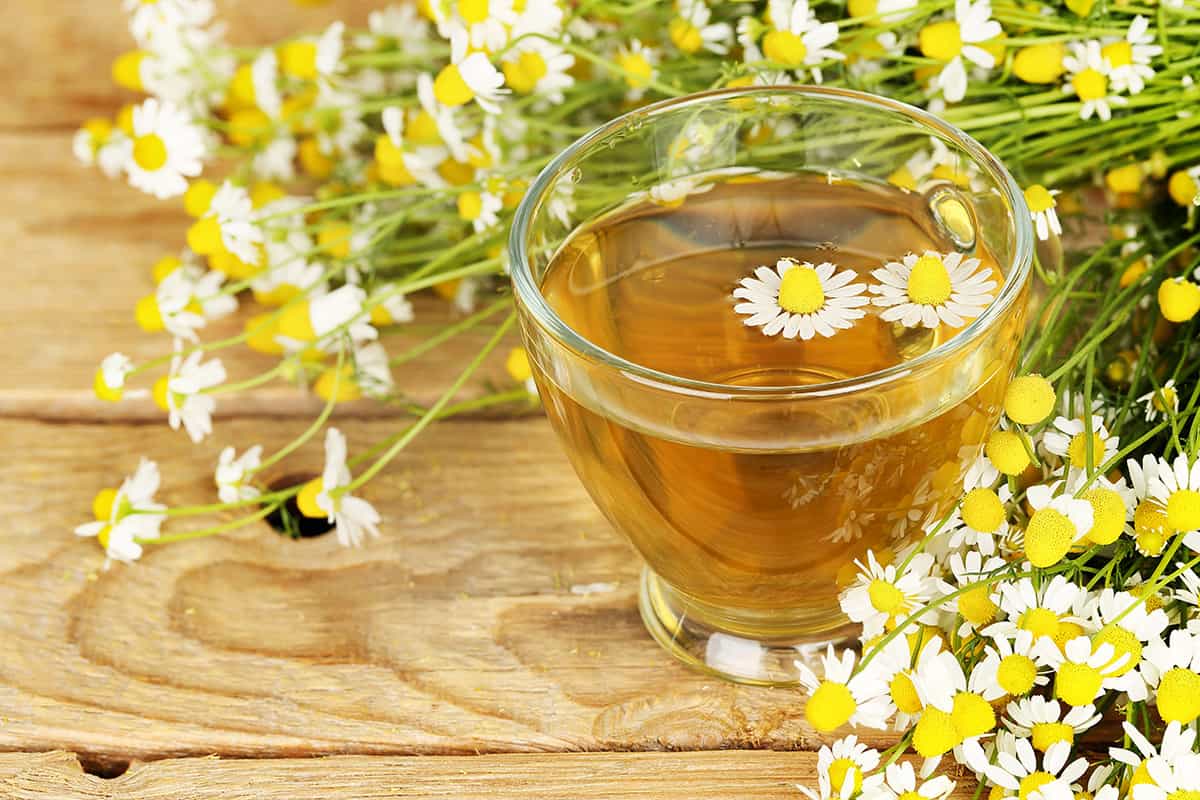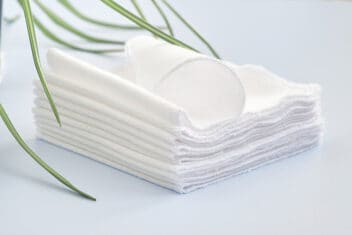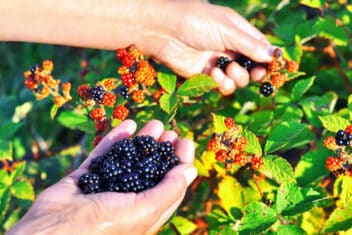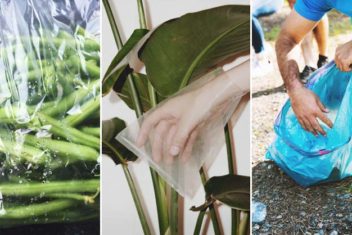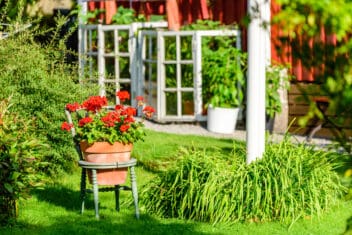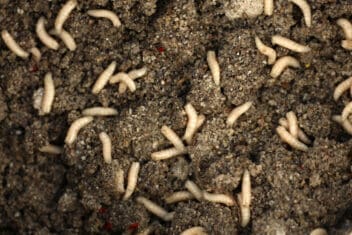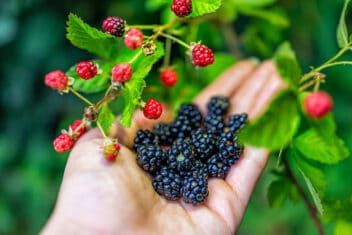Chamomile is one of my favorite flowering herbs. It’s reliable and pretty, with white petals and a bright yellow center. The prolific blooms have become a focal point of my herb garden.
Pretty much everyone has heard of chamomile tea. It’s wonderfully relaxing, especially before bedtime or if you have a nervous stomach.
But did you know that the same chamomile plant is also useful as a fungicide to prevent fungal diseases in the garden? It’s especially effective against the dreaded foe of damping off.
Want to know more? Let’s get going!
What is Damping Off?
Damping off is a broad term for a number of fungal diseases that attack plants below the surface and at the surface level. These diseases cause the rotting of the stem and root tissues.
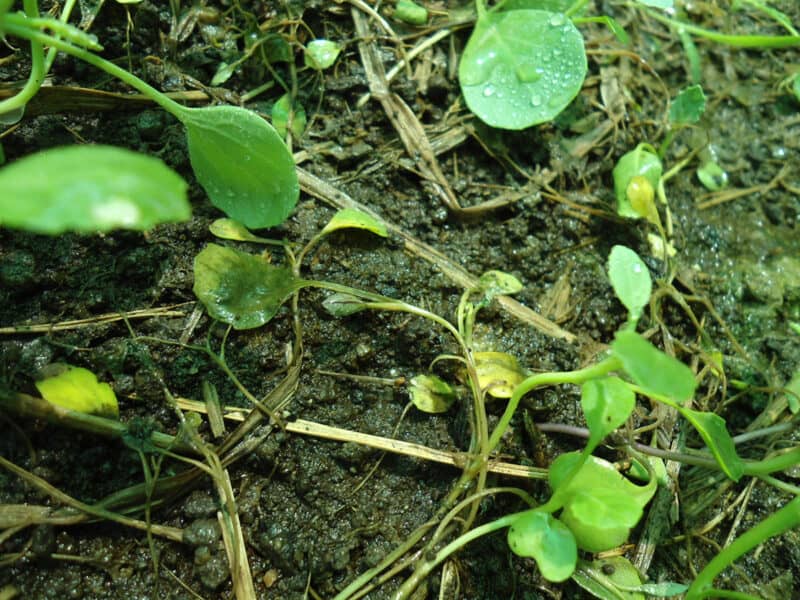
Plants affected by damping off normally germinate fine. Unfortunately, the seedlings turn mushy at the base and eventually fall over and die.
Damping off often occurs when you plant older seeds in wet and cold soil. Poor drainage contributes to damping off, as does planting the seed too deep, soil that is too rich, and high humidity.
The most common cause is pythium root rot, though other fungus diseases causing damping off include:
- Black root rot
- White mold (Sclerotinia)
- Gray mold (Botrytis)
- Phytophthora
- Fusarium
To prevent these fatal fungal diseases, you need something that can kill the fungus before it makes a mess of your plants. You guessed it; we’re using chamomile.
Here are a few symptoms to watch for:
- Yellowing Leaves: If your seedlings’ leaves start to yellow, it might be a symptom of damping off.
- Wilting or dying off: You may be too late at this stage, but it’s worth trying to save your precious seedlings.
- Low vigor: If your seedlings have germinated but don’t seem to be growing much beyond that, you may have the beginnings of damping off.
How to Make Chamomile Fungicide
There are two methods to make the fungicide you need. Both are simple and don’t take long at all.
Because I grow my own chamomile, I use fresh flowers. You can also use dried flowers (either yours that you’ve dried or store-bought)
Using Fresh or Dried Flowers
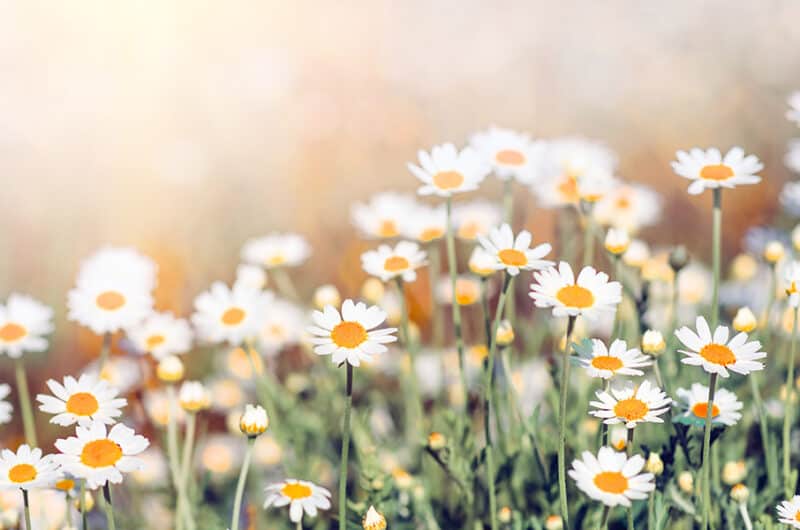
Here’s what you’ll need to make a flower-based anti-fungal using loose flowers.
- 1/4 to 1/2 a cup of whole chamomile flowers
- 2 cups of boiling water
- Heatproof bowl or container
Place the chamomile flowers in the bowl and cover with the boiling water. Let this steep for as long as it takes to cool to a tepid temperature. Strain this mixture into another bowl, so you are left with just golden liquid.
Pour this into a spray bottle, and the fungicide is ready to be used. This amount is good for spraying seedlings in trays.
Using Chamomile Tea Bags
If you don’t have a chamomile plant or access to fresh or dried whole flowers, you can use about four or five chamomile tea bags. Keep in mind that fresher flowers work best, though.
Steep in hot water as above and pour into a spray bottle when the liquid has cooled enough.
Use organic teabags if you can and see if you can find teabags that don’t contain plastics.
If you want to make a bigger batch of fungicide, use 2 quarts of water and 2 cups of chamomile leaves or 16 to 20 teabags.
With this volume of water, simmer the flowers or teabags in the water for about 20 minutes.
Allow this mixture to cool, but leave the flowers or tea bags to steep for a couple of hours while the temperature reduces.
Whichever method you choose, throw the fresh steeped flowers and the tea bags in your compost heap when you’ve finished making your liquid.
How to Use Chamomile Fungicide for Damping Off
Use this mixture to spray the soil and on the seedlings themselves.
I use this spray as a mister to keep the medium moist when I’ve first planted seeds, and I’m waiting for germination.
I also use the liquid to treat the seeds before planting them in a pot or directly in the garden. Soak them for about two hours before planting.
It doesn’t take long for seedlings to be out of the danger zone for damping off. As the plant grows and gets a thicker stem, the risk soon passes.
How to Use Chamomile Fungicide as a Treatment
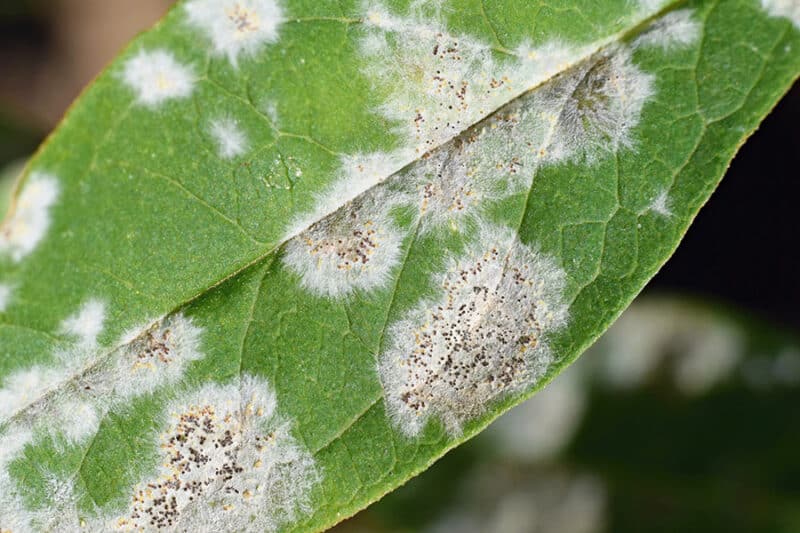
Beyond damping off, there are a number of other diseases that chamomile can treat on young seedlings. These include:
- White mold: If you see white mold starting to grow on the soil or the seedlings you must take action straight away. Spray both soil and seedlings liberally.
- Powdery mildew: This common garden problem can be tackled with a chamomile spray if you catch the issue early enough.
- Botrytis blight: Also known as grey mold, this disease causes browning and wilting. Spray as soon as signs show up.
You can also use the mixture as a foliar spray on any impacted foliage.
Chamomile isn’t going to cure a serious fungal situation in a mature plant. Fusarium and anthracnose, for example, might require a multi-pronged approach. But for mild cases, or as a preventative, it’s hard to beat.
Use Chamomile Fungicide as a Preventative
Chamomile fungicide can be used against any fungal issue in the garden as a preventative. I make up a bulk amount of spray and use it everywhere.
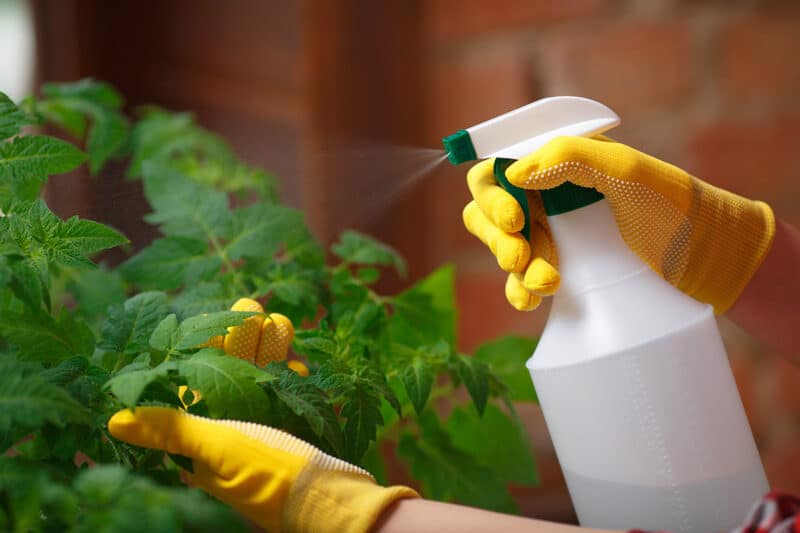
Here are some instances where you might want to use it:
- Use it as a preventative spray on the whole vegetable garden because, in addition to its antifungal properties, chamomile is said to keep a number of insect pests away.
- I spray my apple trees in the dormant season because I live in an area with high humidity in the summer. I do this about four times through the winter when no rain is predicted for a few days.
- If you have seeds past two years old or you are given some, soak them in the solution for two hours before you plant them. I am especially careful if someone gifts me some of their heirloom seeds. As a matter of garden hygiene, I soak the seeds before planting.
As seedlings mature, you can ditch the sprayer and water your plants preventatively with this mixture using a watering can.
You can dilute the mixture into water and use it when you would normally water your plants. Or use a full-strength solution once a week. Being natural, it doesn’t hurt the plants.
One of the joys of gardening is seeing how nature takes care of itself by providing us with cures for plant problems from other plants.
Chamomile fungicide is especially easy to make, it’s 100 percent non-toxic, and it’s effective. It has a broad range of uses, including treating soil, seeds, seedlings, and most fungal diseases at any stage of their presence.
